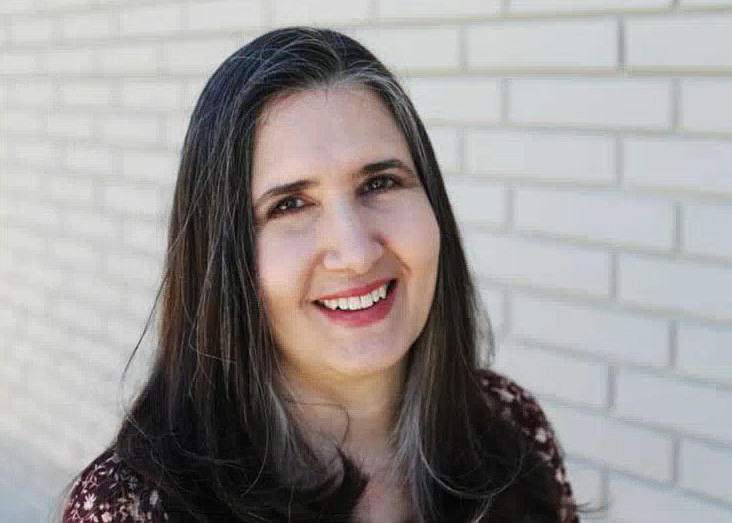Honor the hallowed witch
I have mixed feelings as I write this. Our family thrives at Halloween, at the best time of year. Spirits and magic evoke the season’s beautiful mysteries: Of nature drifting so colorfully into deep sleep and, just when you think it’s dead, magically bursting with life again.
Throughout history man has celebrated this moment, connecting winter’s close of harvest season to his beliefs in a spiritual world. Instead of the usual Halloween topic — ghosts and harvest traditions, Irish Samhain and trick or treating, a tribute to witches is overdue. To do that justice, I can’t keep this light. Yet truth can elevate with its catharsis. Like human relationships, Halloween grows richer with the intimacy of knowledge.
Let’s start with the fun stuff: pop culture. In the picturesque town of Greenwich, N.Y., flanked by trees of bright reds and yellows a sign proudly proclaims it to be “Home of the Witches of Greenwich.” We hoped to see some pointy hats but alas, the Greenwich Witches are a high school sports team sporting a classic witch-on-a-broomstick logo.
It’s an old image. Remember the iconic green-skinned, stripe-socked Margaret Hamilton cackling in the original "Wizard of Oz?" Or Disney’s delightfully nasty Sanderson sisters in "Hocus Pocus?" That stereotype starkly contrasts with America’s favorite suburban '60s witch, Samantha who “Bewitched” us all with her beauty, charm and cute, twitchy nose. Our family favorite is the 1990s “Sabrina The Teenage Witch,” based on the Archie Comics. She made being a young witch cool.
By whatever iteration, each October we put her on display, this Halloween witch. Children shrink and grownups laugh at her misshapen face, stringy hair and toothless grimace under a disfigured nose. Gnarled, knobby fingers twisted into a claw. A bent and twisted torso lurches on wobbly legs.
Here’s where it gets dark. I once thought this was an entirely made-up image, a caricature half based on notions of magic and half on fears of evildoers. It isn’t.
Witches were real, if wholly misunderstood. And their distorted bodies are born of a very sad story.
Witches were simply women, often arrested in secret and dumped in literal pits or dark prisons, accused of being what they couldn’t disprove. Imagine their terror as they were tortured, stripped naked and prodded, and paradoxically questioned until they confessed to whatever crazy claim made it all stop. They festered in dark holes with no sanitation facilities and often, no food.
Now imagine what they looked like after all that was done, whether released or paraded before execution and to people who perceived them as evil (why else would she be there, accused of the devil’s sorcery? She has to be guilty).
Hair in oily strings. Filth stuck to her body. Broken bones. Broken teeth. Bruises making her skin a sickly green. All semblance of humanity gone. This vision was truly a demon, a bride of Satan, a witch.
How did this notion of witches start? No one is sure. Humans still look for scapegoats when they’re scared or don’t understand something, and probably always have. But religion added an incontrovertible layer of power behind the accusations.
Fears of conjurers must have preexisted the Bible, as multiple verses condemn them. The Book of Samuel refers to the Witch of Endor, whom Saul consulted before battling the Philistine army.
By the 1500s, witch hysteria had seized Europe. Thousands of women accused of witchcraft were hung or burned at the stake. Most lived on the fringes of society, single or widowed, independent or self-employed. Some were herbalists whose knowledge of plants’ healing and hallucinogenic properties was suspected of witchery. Too many were simply victims of whoever found them inconvenient.
By the mid-1600s the death count topped 80,000. It was too easy to accuse someone of being in league with Satan, prosecuted and sentenced by puritanical religious figures whom no one could argue with. To protest was tantamount to arguing with God.
Sadly these ideas arrived in the New World with puritanical pilgrims. Early settlers were reeling from a smallpox epidemic, war with Britain, and the constant worry about attacks by the Native Americans, whose land they’d grabbed.
When people feel afraid, they want someone to blame. Ascribing it returns a feeling of control.
This brings our witch story to 1692 Salem, Mass. Witnesses saw two teenage girls in fits, screaming, their bodies contorting. Whether medical coincidence or fakery, soon other girls in Salem emulated them. Hysteria set in and three women were soon accused of casting spells.
Under heartbreaking torture and abuse, a woman called Tituba confessed and pointed a finger at two others, Sarah Osbourne and Sarah Good (pregnant), who were hung. Tituba was later released, but witch fever had infected Salem. Of 150 more accused 12 women and six men were executed.
Let’s end on a lighter note. Why the broom?
Back to France in 1451 and poet Martin Le Franc’s manuscript about virtuous womanhood, “Le Champion des Dames” (Defender of Ladies). One illustration depicts two women, one flying on a white stick and the other riding a broom. The caption describes them as Waldensians, a 12th-century subsect of Christianity with women priests. The church branded this as heresy, suggesting women on broomsticks are witches.
Another broomstick theory comes from a pagan fertility ritual described by anthropologist Robin Skelton. Farmers danced under a full moon while riding poles, brooms, or pitchforks (ouch), jumping as high as they could so their crops would grow to the same height. (There’s another theory involving something more intimate, but let’s skip that one.)
Whatever her true story, this year I revere the Halloween Witch and hold her sacred. I honor the courage and endurance of those countless women who fell under the feet of humanity’s darker soul.
Apropos of Halloween.
• • •
Sholeh Patrick is a columnist for the Hagadone News Network. Email sholeh@cdapress.com.



